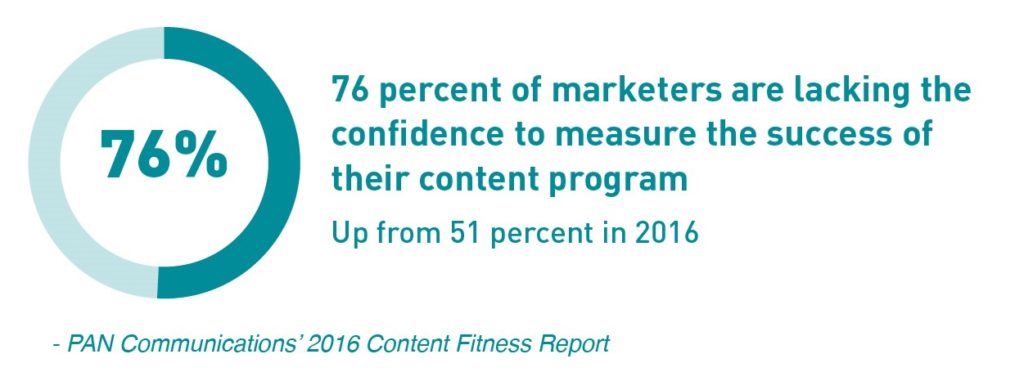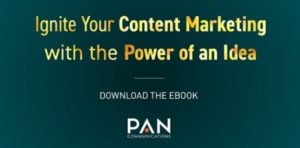What is a brand-to-demand and PR strategy and what can it do for your business? Gone are the days of single-channel marketing campaigns, traditional versus digital, earned versus paid. Now the winning strategy integrates and harmonizes across all marketing channels, ensuring brand awareness is paired seamlessly with demand generation. Coordinate between your social media, public relations, inbound marketing and creative efforts, and you’ll overcome many of the challenges facing CMOs today.
Only 14% of marketers integrate campaigns across all channels. Are you one of them?
Success stems from having a unified brand-to-demand effort. Why struggle to implement one campaign with one goal while managing multiple agencies or teams under separate roofs? Instead, build an inbound program that’s run by a unified team with common goals to yield sustained success.
Better yet, you can leverage existing marketing assets across channels, giving you speed, agility, and efficiency as you launch increasingly more effective brand-to-demand strategies.
If you’re ready to build trust and increase sales, defining your brand-to-demand strategy is the first step in the right direction.
- Leveraging PR in a Brand-to Demand-Strategy
- Integrating Social with PR through Influencer Marketing
- The Impact of Content Marketing
- Creative – Powering Your Digital Content with Visuals
- Measurement & Analytics for Brand to Demand
Leveraging PR in a Brand-to-Demand Strategy
“Conversation Is the Best Content” – Ted Rubin, social media expert and influencer
Revisit your public relations strategy as you begin your journey towards a more integrated marketing effort. PR has changed over the last several years – digital is transforming media, both traditional and online. What conversations are you having with your prospective customers and who are they? How are you sharing those compelling stories? There are many components to weave together to make the magic happen.
Messaging & Positioning
Get to know your ideal audience by cultivating your buyer personas through research, surveys and interviews. Buyer personas are fictionalized versions of your ideal buyer. Overall, they make it easier for companies to adapt their content to best reach the real-life customer.
Once you define your personas, remember that the old adage still rings true. Content is king. Good content and messaging drives your paid, shared, and earned strategy, so it’s crucial to an integrated approach.

Creative Storytelling – the Intersection of PR and Content
Craft stories that will resonate at each stage of the customer journey and improve their overall experience as you follow them along their path to purpose. Ultimately, this will help build advocates for your brand, drive engagement and grow revenue opportunities through positive brand experiences. Be creative – take one story (like a company anniversary) and use it to spin off multiple ideas, be it a CEO profile, company history or industry predictions.
Don’t just rely off of your team’s instincts, however. While it’s good to remain creative – you’ll need to focus on impactful messaging. You must use an approach that involves: research; trial and error; measurement; analysis; insights and, finally, repeating this formula until you find a message and campaign that leads your prospects down a successful path to purchase. Use martech tools to turn your measurement into impactful insights. Specifically, look toward social media monitoring tools that show curves in conversation to help guide the research phase of this strategy so that you’re not starting from ground zero.
Strategic Media Relations
One of the most effective distribution strategies today is influencer marketing.
No Wonder 86 percent of Marketers Used This Strategy in the Last Year
Independent bloggers are having an enormous effect on brands. Many buyers now say that they research products on blogs before making purchases. And strategic media relations remain important, as we reach across multiple marketing channels. Content on one channel can feed others if promoted across all platforms. Media training for your executives can help your top brass be part of the storytelling and relationship building, so make that a part of your integrated plans as well.
Analyst relations should be your mid-funnel touchpoint along this journey. They remain a critical cornerstone when it comes to influencing the market. Simply take a look at any Forrester or Gartner report. This research and industry insight has longevity, and if your company or spokesperson is quoted or mentioned in these reports, you can leverage it throughout your content marketing and media relations efforts.
PR has always been dependent upon building strong relationships with other industry stakeholders. Now more than ever, it’s critical to provide value to one another while igniting conversations with your target audience and advocates. The goal is to ensure you are building a bench of thought leaders, whether it be influencers, analysts, consultants or specialists – that are valued resources to the media and a consistent voice within industry conversations.
Integrating Social Media and PR through Influencer Marketing
“Influencer marketing was rated as the fastest-growing online customer-acquisition channel, beating organic search, paid search and email marketing” in a Tomoson poll of marketing professionals.
The goal of any marketing, PR or social media campaign is to expand your reach, promote your brand and continue to lead your buyer personas down the path to purchase. PR and social media can’t evolve without an integrated growth strategy. The first step in any successful campaign is knowing your ideal audience and then creating meaningful content to engage with them. Influencer marketing is the “must have” component of your marketing plan, impacting virtually every other channel.
Influencer Marketing, the Personal Touch

Source: https://blog.tomoson.com/influencer-marketing-study/
PR, by its nature, has been known for effectively fostering relationships with the media, which is why it only makes sense for influencer and media relations to evolve and co-exist in an integrated marketing strategy. It’s a critical component of an integrated plan as PR pros work to develop relationships with brand advocates for their clients. It will become even more critical as influencer marketing increases in importance for both business-to-consumer and business-to-business programs.
Influencer relations is about accomplishing mutual goals and providing value to one another while igniting conversations with your target audience and advocates. By developing these relationships, co-creation can begin and discussions can revolve around the pain points of your customer and how to solve them — effectively building trust along this journey.
Social Audits – Using Audience Behavior to Crush It
Social media enables brands to communicate and engage with current and prospective customers, media, partners and influencers. Monitoring conversations that relate to your brand will allow you to see consistencies, behaviors and traits inherent in your buyer. With this data in hand, marketers can more easily create engaging, data-driven content geared directly towards their customer and develop a social media campaign that resonates.
Social media is full of fast moving channels, which is why the only way to monitor and receive any data and/or trends from these conversations is with the use of martech tools. Martech tools are excellent for social listening, but also critical when conducting a social audit. Compare top competitors within your industry; see how your company ranks when it comes to specific keywords and hashtags; analyze which influencers are following your brand and/or your competitors, to name a few. By conducting a successful social audit, you’ll be able to see a more accurate depiction of where your social channels are and where they need to be by the end of the year.
If you don’t have your PR, social media and marketing efforts all simultaneously talking, coordinating and integrating, you won’t be able to respond to new opportunities quickly enough to take advantage of them.
Employee Advocacy
Before you dismiss this as a function of HR, consider the potential of employee advocacy as a marketing platform. Your employees can become the best influencers out there, if you do it right.
According to Ted Rubin, a leading Social Marketing Strategist, Keynote Speaker, Brand Evangelist and Acting CMO of Brand Innovators, “If you empower your employees, they’ll empower your brand. There are so many valuable ways to do it. … [T]hey’re hitting exactly what you’re talking about: their biggest challenge is not getting the brand to this point to agree that it’s something valuable … One of the biggest problems is that companies talk about omni-channel going out, but they forget about omni-channel on the inside.”
What’s the best reason to pursue an employee advocacy program? Leads developed through employee social marketing initiatives convert 7x more frequently than other leads. (Kredible via IBM)
Recognized or not, employees have the potential to be your brand’s biggest advocates. The rise of social media has paved the way for businesses to create programs dedicated to employee advocacy, but the process can be daunting. This is where integrated marketing firms come into play. These firms have the knowledge, skills and tools to help market your brand through your own employees. One of the most challenging roadblocks to employee engagement can be capturing the impact that employees truly have on moving the needle. Capitalize on your marketing firms to take advantage of the martech tools that they already have to measure your employee advocacy program. Tools like Everyone Social and Dynamic Signal are highly recommended and can provide the analysis and scope that you’re looking for.
The best way to get started is to work with an integrated marketing firm to get your program off the ground and allow it to run smoothly. Understanding the importance and potential of a program, learning how to create and implement it, and getting everyone on board are three roadblocks that often hinder brands from developing an employee advocacy program.
The Impact of Content Marketing
“Consumers are fed up with in-your-face advertising and sales tactics that feel cheap, slimy or underhanded. Instead, they’re attracted to authenticity, transparency and friendliness in a brand.” – Julia McCoy, Content Marketing Institute
Good content resonates with the reader or viewer because it fits with their goals or general interest. Great content maps to their desire, emotions and journey, delivering an outcome that will build advocacy and drive engagement mapped to revenue.
In order to produce high-impact content your brand should focus on content that ranks high and will continue to be in demand. A few creative examples include: crowdsource within your company — but make sure they understand your brand’s voice and write genuine content; encourage guest contributors — however, it’s recommended to have guidelines in place; and, finally, recruit client or user-generated content.
Navigating that path requires the use of analytics to get a clear understanding of the impact of your content on your audience. Here’s where the intersection of PR and content becomes the pinnacle of great storytelling.
Persona & Buyer Development
With defined personas, content can engage customers and anticipate behavior that will drive desired outcomes. Without insight into your data and analytics, your brand’s opportunity to connect a story is unlikely to be a compelling rest stop.
More than half of marketers today are not confident in how they are measuring the impact of their content strategy, but doing so is more crucial than ever. But measuring the effectiveness of content and aligning metrics to brand goals can be a struggle. Marketers must remain agile and engaged in order to play a role in this evolution.
While only 64 percent of marketers think their content is tailored to their customers’ needs, many are turning to integrated marketing (with strong content) and PR to hone their analytics and provide the right promotion mix to create content for brand ignition. Personalize content by aligning it with a buyer persona – it can be difficult, but it’s worth it.
Inbound Marketing – Driving Inbound Leads
Inbound is a framework you should be adapting. According to Hubspot, attracting customers through relevant and helpful content, inbound marketing lets potential customers find you. Don’t fight for customer’s attention. Create content targeted to well thought out personas and watch the inbound leads come in. When done correctly, using this as part of an inbound approach is more cost-effective than outbound tactics.
In order to build out a content marketing program that drives results, engagement, and emotion, constantly measure the impact of your content. The ultimate measurement of your content effectiveness? Leads converted to customers.
Track these top 6 inbound marketing influencers to see what you should be focusing on in 2019.
Marketing Strategies for Content Creation & Management
Creating content for everyone resonates with no one. Good content resonates with the reader because it fits with their goals or interests. Content should be created to address myriad interests, consideration points, topics and tips, making it not only a compelling read, but a vendor-neutral perspective that is useful to the reader despite who is commissioning the work itself. More marketers need to remember this when developing content: You can and should add value, without always having to sell something.
Building a brand’s reputation and demonstrating industry knowledge is an equally important endeavor – if not the most important one – when thinking long term about content strategy, engagement and how to leave a lasting impression.
Follow these top 10 content marketing influencers to stay informed on this important and ever-changing tactic.
Creative – Powering Your Digital Content with Visuals
Integral to every campaign is smart, creative mapping to your persona base to determine what effectively hits your audience, how it hits your audience, and where it hits your audience. A large part in getting all three of these in place comes down to your digital assets and creative throughout all your inbound, social and PR efforts. Having captivating creative to showcase your brand’s messaging can take your integrated campaign to new heights — if you have the right tools, skills and experience within your team.
Creative Design
The average human attention span has dropped to 8.25 sec. – less than that of a goldfish, according to Jen Bonney, PAN Communications.
Great design can help surmount the challenge of the shrinking attention span by grabbing an audience’s attention, enabling your message to be absorbed. Large or small, businesses need high-quality graphic design and visual storytelling to make sales. Brands communicate with consumers using colors, fonts, websites, photography and logos. If a potential customer is turned off by low-quality product shots on your website, a logo made from the same clipart they used on their child’s birthday invitation, or that stock photo of business men shaking hands that you posted on your Twitter page… you’ve lost them, and you may never get them back.
Spend the money up front for high-quality design, and visual consistency across your integrated marketing campaign. It is cheaper to do it correctly the first time, than to catch up with your competitors after losing sales.
Social Shareables
It’s a fact that visuals get viewed, liked, commented on and shared more than text-based posts. Visual content gets shared 40 times more than any other content on social.

Bold stats, inspirational quotes and “Did You Know” images are definitely fan favorites. When planning your content calendar, keep in mind that social media is all about ego. People love seeing themselves. Photos of your client’s followers benefiting from their product/service will get shared.
Video Creation in Your Content Strategy
Video should be part of your content strategy. But don’t run right out and hire a production company to make that perfectly-polished video, with a stale voice over, a guy in a suit and a few stock music tracks to upload to YouTube. Develop the right type of video content to truly drive your integrated marketing strategy.
Streaming Video – YouTube is a giant, but Facebook’s 4 billion daily video streams is the number that’s only going to continue to grow with time. 35 percent of marketers using interactive video extensively see increased conversions, and 25 percent saw an increase in sales. It’s time to embrace digital change.
Man on the Street Videos – Move away from overly staged videos and take it to the streets. Do a Q&A about an issue that’s tangentially related to what your client does. Take an offbeat approach. This can exhibit an “independent vibe” and build buzz.
Measurement & Analytics for Brand to Demand
“Measuring the effectiveness of content and aligning metrics to brand goals continues to be a struggle for modern marketers despite further developments in marketing technology. Today’s marketers should be measuring at the beginning, middle and end of their marketing process.”
- PAN Communications’ 2018 Content Fitness Report
60 percent of CMOs are prioritizing content and social media marketing above all other forms of marketing.
But marketers are often flying blind when it comes to building budgets and establishing ROI – they largely can’t connect marketing efforts to pipeline and revenue. Integrated marketing requires breaking out of silos and measuring success across the board.
Integrated Marketing Assessments, Reporting & Analytics
Big data and analytics have become crucial for integrated marketing and PR because they enable marketers to achieve more accurate and effective targeting. Yet forty-six percent of today’s marketers say proving the ROI of their marketing activities is one of the biggest challenges they face.
Many marketers are only tracking data such as website traffic, bounce rate and time-on-site from Google Analytics. But a CMO needs to see the entire inbound and outbound picture.
It’s time to take a holistic view across all your marketing channels and roll up results to your topline strategic plan and business goals. Work toward a common almighty goal … meeting your organization’s revenue goals.
Search Engine Optimization – SEO
Understanding the importance of search engine optimization is the first step to driving traffic to your brand’s website – and ultimately creating more revenue. How can you keep up with digital innovations in such a fast-paced industry? Interacting with top SEO influencers on social media is key. They can help you learn how to break through the clutter of the internet, ensure your website has a seat at the top of search results, build site traffic and increase ROI.
Read our top 10 picks for SEO influencers to follow, then tackle your digital media fears and maximize your website traffic.
Choosing the Right Data Analytics Tools
The key to a successful marketing program is determining what works and learning from what doesn’t. Yet marketers are finding it extremely difficult to hone in on what tools are useful and recognize what data is important.

While there are many martech tools out there, Google Analytics is certainly your first stop to measure the success of your integrated marketing program.
Google Analytics lets you drill down into your website data for a better understanding of Audience (new versus returning customers, and how their actions and engagement affect your website’s performance level); Acquisition (determine which channel in your integrated program drove the most traffic, helping you identify your brand’s most engaging channel); and Behavior (allowing you to determine which content is most interesting, attention-grabbing and relevant). There’s far more there than these three tabs – in fact, it’s easy to get overwhelmed with the wealth of data available. But start digging in there and you’ll be amazed at what you can learn about your customers and about your integrated marketing results.
Moz is another popular and powerful tool that empowers marketers to measure and improve their search, social, links and brand marketing – the very definition of integrated marketing. Their site offers SEO tools including keyword research, backlink research, rank tracking and more, including a blog with the best advice, search and insights all in the name of improving your SEO.
The ability to gather, understand and capitalize on your data using these tools is what will set you apart from other industry experts and allow you to closely monitor your marketing efforts.
***
Now, more than ever, marketing, PR and social media can’t evolve without an integrated growth strategy.
Launching an integrated marketing and PR strategy encompasses both traditional and digital channels. It requires coordination, innovation and analytics, but it’s possible with a unified effort. Supported by a single team with common goals, this approach will bring you speed, agility and efficiency as you launch increasingly more effective integrated strategies.
To get started, take an inventory of your resources. It might make sense to tap into an outsider’s perspective, like an integrated agency, to pull the pieces together, working in partnership with your existing team or in place of disparate agencies working in silos.
EXPLORE PAN’S SOLUTIONS



